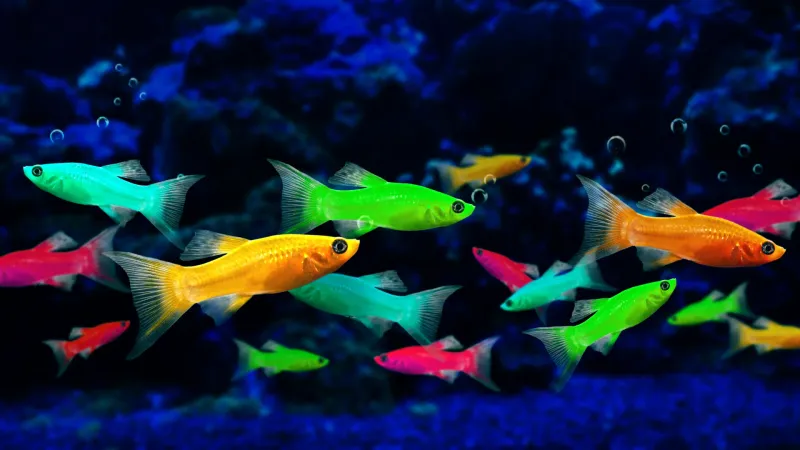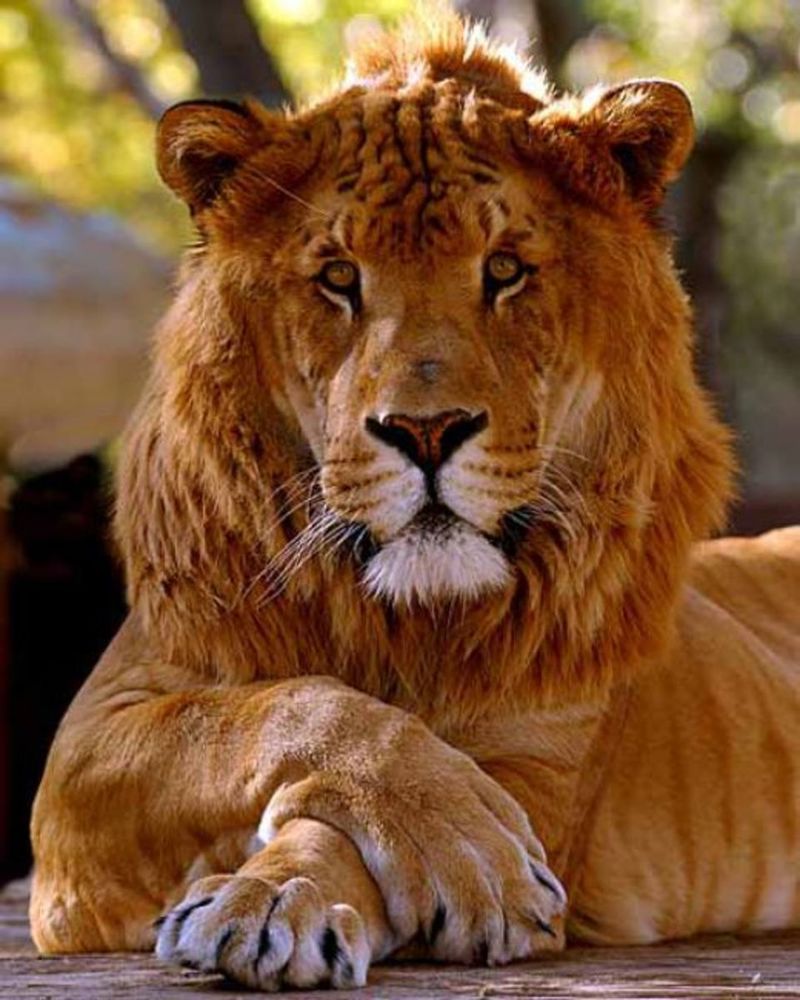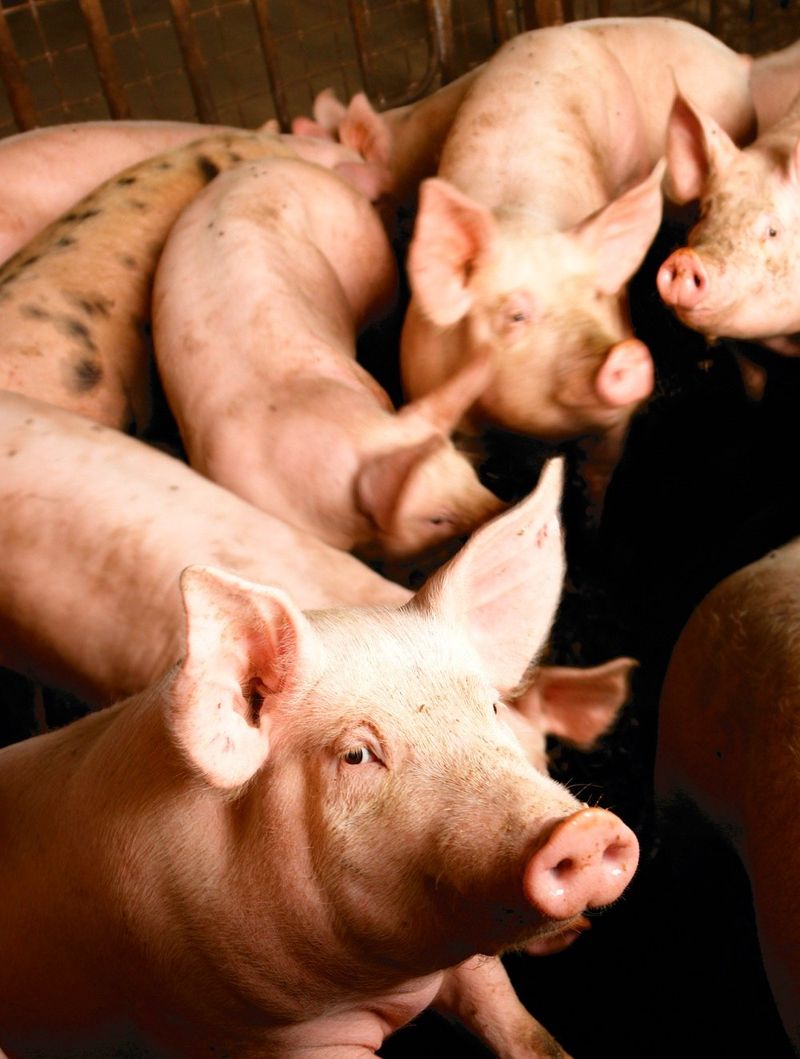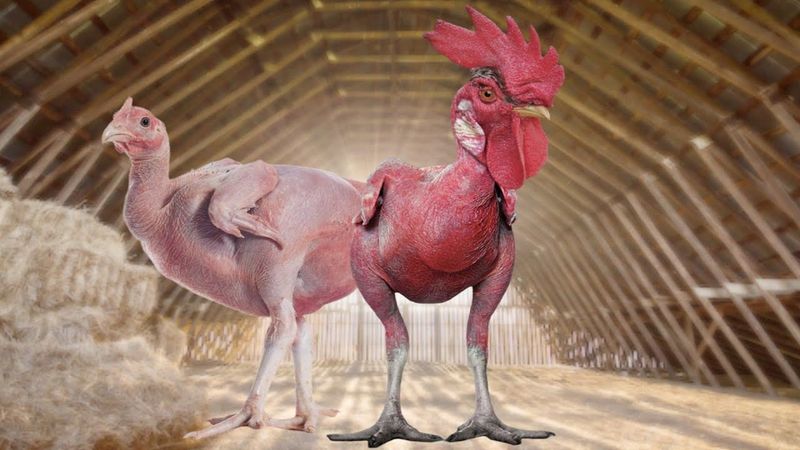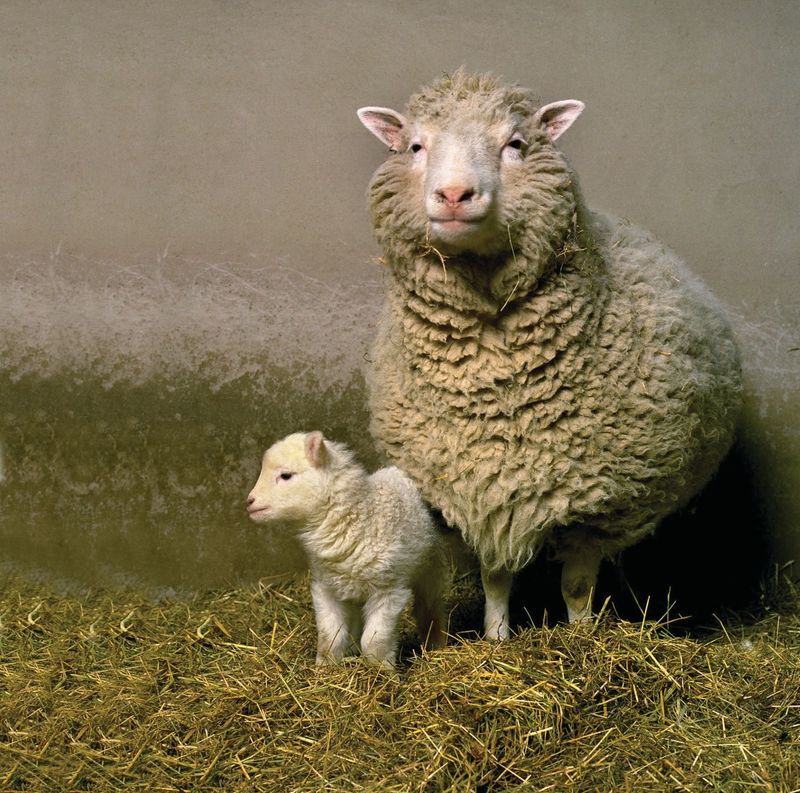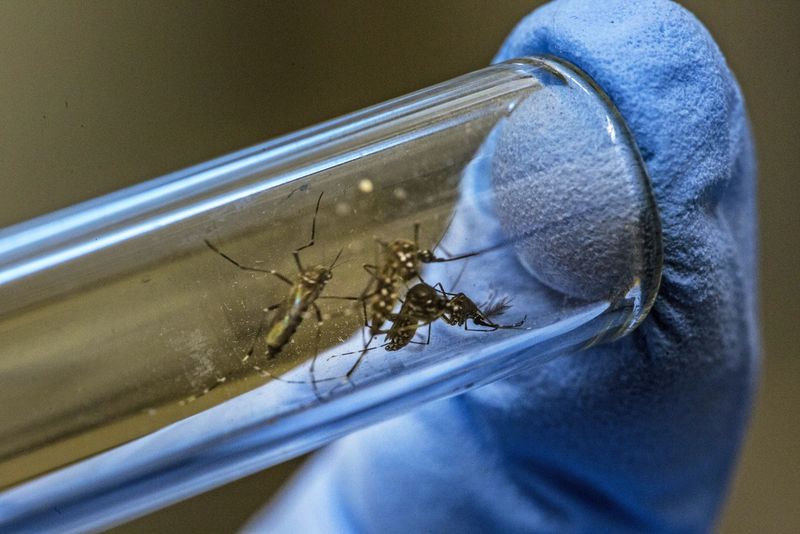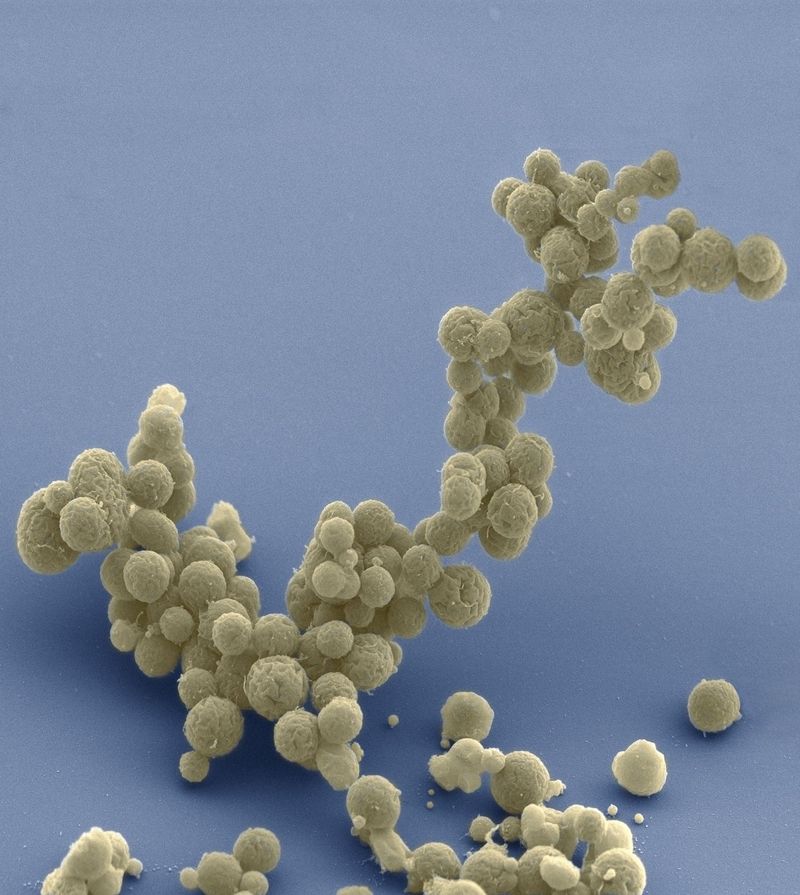Our world is constantly evolving, and so are the creatures that inhabit it. While many animals have roamed Earth for millions of years, some fascinating creatures are surprisingly recent additions to our planet. Through genetic engineering, selective breeding, and scientific innovation, humans have created entirely new species that our great-grandparents never knew existed. Let’s explore these modern marvels that have appeared in just the last century.
1. Labradoodle (1989)
Wally Conron never expected to start a designer dog revolution when he crossed a Labrador with a Poodle. His goal was simple: create a guide dog for vision-impaired people with allergies.
The result was an intelligent, friendly canine with a curly, low-shedding coat that rarely triggers allergic reactions. These dogs combine the Labrador’s eager-to-please nature with the Poodle’s smarts and hypoallergenic fur.
While originally bred for service work, Labradoodles quickly captured hearts worldwide as family pets. Their popularity exploded in the 1990s, paving the way for countless other designer crossbreeds that dominate today’s pet scene.
2. GloFish (2003)
These aren’t fantasy creatures from a sci-fi movie—they’re GloFish, the first genetically modified animals sold as pets.
Scientists at the National University of Singapore initially created these fluorescent swimmers to detect water pollution. By inserting genes from jellyfish and sea coral into zebrafish embryos, they engineered fish that would glow when exposed to environmental toxins.
The unexpected beauty of these glowing creatures quickly caught attention beyond scientific circles. Today, GloFish come in several species including tetras and bettas, all sporting the same otherworldly glow that makes aquariums look like underwater light shows.
3. Liger (20th Century)
Towering over both its parent species, the liger stands as nature’s largest cat—a genetic marvel that shouldn’t naturally exist. Born from a male lion and female tiger, these massive hybrids can reach twice the size of either parent.
Unlike many hybrids, ligers don’t typically inherit health problems. Instead, they grow continuously due to absent growth-inhibiting genes that normally regulate size. Hercules, the world’s largest liger, tips the scales at over 900 pounds!
With a lion’s sociability and a tiger’s love of swimming, ligers exhibit fascinating blended behaviors. Their distinctive appearance—tawny fur with faint tiger stripes and a hint of a lion’s mane—makes them living testaments to genetic possibility.
4. Savannah Cat (1986)
Exotic meets domestic in this striking feline that brings wild African savanna heritage into living rooms worldwide. Created by crossing a serval—a spotted African wildcat—with a domestic cat, the Savannah boasts long legs, oversized ears, and a cheetah-like spotted coat.
First-generation Savannahs can reach up to 20 pounds and stand as tall as medium-sized dogs. Their high energy and intelligence demand plenty of mental stimulation and space to roam.
Not just any exotic pet, these cats command premium prices—sometimes exceeding $20,000 for early-generation kittens. Despite the cost, their dog-like loyalty, ability to learn tricks, and striking appearance have created a passionate following among exotic pet enthusiasts.
5. Belgian Blue Cattle (1950s)
Rippling with muscle like bodybuilders, Belgian Blue cattle look almost unreal—like bovine superheroes with bulging physiques. Their extraordinary appearance isn’t from steroids but a natural genetic mutation discovered and selectively bred by Belgian farmers in the mid-20th century.
The secret lies in a missing protein called myostatin, which normally limits muscle growth. Without this biological brake, muscles develop with astonishing density—a condition called “double-muscling.”
While these cattle produce exceptionally lean meat with 20% more protein than conventional beef, their extreme musculature comes with challenges. Their massive calves often cannot be delivered naturally, requiring cesarean sections, raising ethical questions about breeding animals that cannot reproduce without human intervention.
6. Enviropig (1999-2012)
Revolutionary yet controversial, the Enviropig represented a bold attempt to solve a serious environmental problem. These genetically modified Yorkshire pigs carried a special enzyme from E. coli bacteria that allowed them to digest plant phosphorus that normal pigs can’t process.
Farm runoff containing undigested phosphorus from pig manure contributes significantly to water pollution, causing toxic algae blooms. Enviropigs produced manure with 60% less phosphorus, potentially reducing this environmental impact.
Despite their promise, these pink eco-warriors never made it to farms. Facing public skepticism about GMO animals and funding challenges, the project was terminated in 2012. All remaining Enviropigs were humanely euthanized, marking the end of what might have been an agricultural game-changer.
7. Featherless Chicken (2002)
Naked and pink, the featherless chicken shocked the world when Israeli geneticist Avigdor Cahaner unveiled it in 2002. These unusual birds weren’t created through genetic engineering but through selective breeding of naturally occurring mutations.
The motivation was practical: chickens in hot climates suffer tremendously from heat, and roughly 20% of their feed goes toward growing feathers they don’t need. Without feathers, these chickens stay cooler and require less food to grow.
Animal welfare advocates immediately raised concerns about the birds’ vulnerability to parasites, sunburn, and social rejection from other chickens. Though never commercially successful, these controversial creatures sparked important discussions about where the line between innovation and ethical animal treatment should be drawn.
8. Dolly the Sheep (1996-2003)
A fluffy white sheep with an ordinary appearance made extraordinary history. Dolly wasn’t just any sheep—she was an exact genetic copy of a six-year-old ewe, created without a father.
Scientists at the Roslin Institute in Scotland extracted DNA from a mammary gland cell (hence the name “Dolly,” after country singer Dolly Parton) and transferred it into an egg cell. Against astronomical odds, the experiment worked, proving mammals could be cloned from adult cells.
Though Dolly lived just six years—half a sheep’s normal lifespan—before succumbing to lung disease, her legacy transformed science forever. Her preserved body now stands in Scotland’s National Museum, a monument to a scientific milestone that forced humanity to confront profound questions about identity and the ethics of creation.
9. Mosquito Fish (Introduced Globally in 20th Century)
Small but mighty warriors in the battle against disease, mosquito fish have saved countless lives across the globe. Native to North America, these tiny predators have voracious appetites for mosquito larvae, consuming up to 500 per day.
During the early 20th century, health officials worldwide introduced these fish to combat malaria and other mosquito-borne illnesses. Their impact was dramatic—in some regions, they helped reduce malaria cases by over 90%.
Success came with unexpected consequences, however. Released into new ecosystems without natural checks, mosquito fish often outcompete native species and disrupt local food webs. What began as a public health triumph has become an ecological cautionary tale about introducing species beyond their natural ranges.
10. Genetically Modified Mosquitoes (2000s)
Microscopic genetic time bombs with wings—that’s essentially what Oxitec’s modified mosquitoes represent in the fight against deadly diseases. These lab-created Aedes aegypti males carry a self-limiting gene that causes their offspring to die before reaching adulthood.
When released into the wild, these modified males—which don’t bite humans—mate with wild females. The resulting eggs hatch normally, but the larvae die before they can mature into disease-spreading adults, potentially reducing mosquito populations by over 90%.
Field trials in Brazil showed dramatic reductions in dengue fever cases, but controversy follows these insects wherever they fly. Environmental groups worry about unforeseen consequences of releasing genetically modified organisms into complex ecosystems, highlighting the tension between technological solutions and ecological caution.
11. Bioengineered Silkworms (2020s)
Spinning liquid gold stronger than steel, these modified silkworms represent a revolutionary fusion of arachnid and insect biology. Scientists accomplished what seemed impossible: transferring spider silk genes into silkworms to create hybrid creatures that produce super-strong fibers through traditional silk farming methods.
Spider silk has always fascinated materials scientists—it’s five times stronger than steel by weight yet incredibly elastic. The problem? Spiders are territorial cannibals that can’t be farmed efficiently.
The solution came through genetic engineering, creating docile silkworms that produce spider-strength silk in commercial quantities. This breakthrough material could revolutionize everything from bulletproof vests to medical sutures, combining ancient sericulture with cutting-edge biotechnology to create truly 21st-century creatures.
12. AquAdvantage Salmon (2015)
Swimming against the current of public opinion, AquAdvantage salmon became the first genetically modified animal approved for human consumption. These remarkable fish contain a growth hormone gene from Chinook salmon paired with a genetic switch from ocean pout that keeps the hormone active year-round.
The result? Salmon that grow to market size in 18 months instead of the typical three years, while consuming 25% less feed. Developers argue these fish could reduce pressure on wild salmon populations and increase food security with a smaller environmental footprint.
Despite FDA approval declaring them safe to eat and environmentally low-risk when raised in landlocked facilities, these fast-growing fish faced fierce resistance from environmental groups and traditional salmon farmers, highlighting the complex intersection of food technology and public acceptance.
13. CRISPR-Edited Pigs (2017)
Oinking their way into medical history, these special pigs represent a breakthrough in both livestock health and potential human organ transplantation. Using CRISPR gene-editing technology, scientists at eGenesis removed dangerous porcine retroviruses (PERVs) from pig DNA—viruses that could potentially infect humans receiving pig organ transplants.
Beyond potential xenotransplantation applications, researchers have created pigs resistant to Porcine Reproductive and Respiratory Syndrome (PRRS), a devastating disease costing the global pork industry billions annually. These disease-resistant pigs could dramatically improve animal welfare while reducing antibiotic use.
Unlike older genetic modification techniques, CRISPR allows precise editing without introducing foreign DNA, creating animals that could theoretically have evolved naturally—just in centuries rather than decades.
14. RoboBees (2013)
Half the size of a paper clip and buzzing with innovation, RoboBees represent humanity’s high-tech response to a looming ecological crisis. As bee populations decline worldwide, these tiny flying robots developed by Harvard researchers could potentially fill a critical gap in crop pollination.
Each RoboBee weighs just 0.1 gram yet packs impressive technology: micro-actuators that flap gossamer-thin wings 120 times per second, sensors for navigation, and special adhesives allowing them to perch on surfaces to conserve energy. Recent models can even dive into water and re-emerge to continue flying.
While not truly alive, these mechanical pollinators blur the line between machine and creature, raising fascinating questions about how technology might supplement—or eventually replace—ecosystem services traditionally provided by biological organisms.
15. Synthetic Bacteria (2010)
Born entirely from chemicals and computer code, JCVI-syn1.0 represents the first truly artificial life form. Unlike genetically modified organisms that merely edit existing life, this synthetic bacteria was built from scratch by Dr. Craig Venter’s team, who synthesized a complete bacterial genome and transplanted it into an empty cell.
The artificial genome contained over one million DNA base pairs, including “watermarks” with encoded messages and quotes. When activated in the host cell, this synthetic DNA took control and created a living, reproducing bacterium that had never before existed in nature.
More philosophical question than practical tool, this breakthrough forced us to reconsider what “life” means when humans can design and build it from raw chemicals. Are we now creators rather than just modifiers of life?


